Kyoto, with its timeless charm and rich history, is an indispensable destination for international visitors to Japan. For those experiencing Kyoto for the first time, we’ve designed a classic, efficient 3-day itinerary to help you discover its most iconic sights.
Day 1: Golden and Silver Splendor, and the Heart of the Ancient Capital
Start your journey from Kyoto Station, the city’s main gateway, and head north to explore its famous landmarks before delving into the historical and cultural core.


- Morning: Kinkaku-ji Temple & Ryoan-ji Temple
Begin your day at Kinkaku-ji Temple (Rokuon-ji), a World Heritage site famously known as the “Golden Pavilion” due to its stunning gold-leaf exterior. The sight of the pavilion shimmering on the pond is truly magnificent. Next, visit Ryoan-ji Temple, renowned for its rock garden. This karesansui (dry landscape) garden, embodying the spirit of Zen, brings a profound sense of tranquility to all who behold it. - Lunch: Near Kinkaku-ji or move to Central Kyoto There are a few dining options around Kinkaku-ji, or you might prefer to head back towards central Kyoto for lunch.

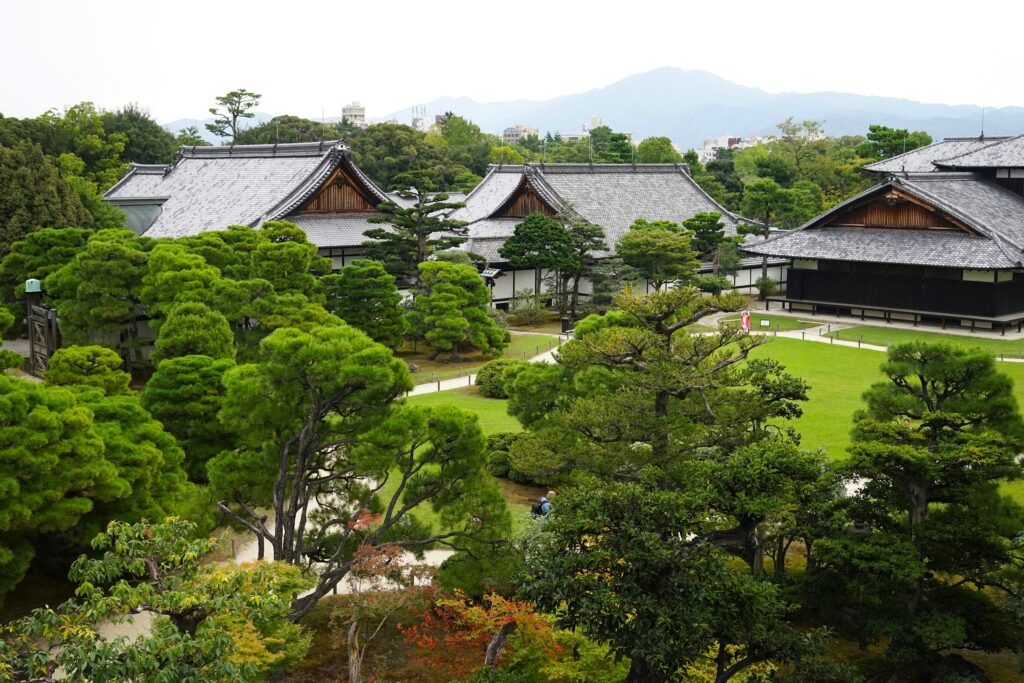
- Afternoon: Nijo Castle & Kyoto Imperial Palace
Explore Nijo Castle, another World Heritage site. Built by Tokugawa Ieyasu, this castle boasts opulent wall paintings and features a unique “Nightingale Floor” (uguisu-bari). (Nightingale Floor Explained: This special flooring is designed to squeak like a bird when walked upon, acting as an alarm system against intruders.) Afterward, visit the Kyoto Imperial Palace, a historically significant site in Japan. You can stroll through its expansive grounds and delve into the history of the Imperial Family. While reservations might be needed sometimes, there are often same-day admission slots available.
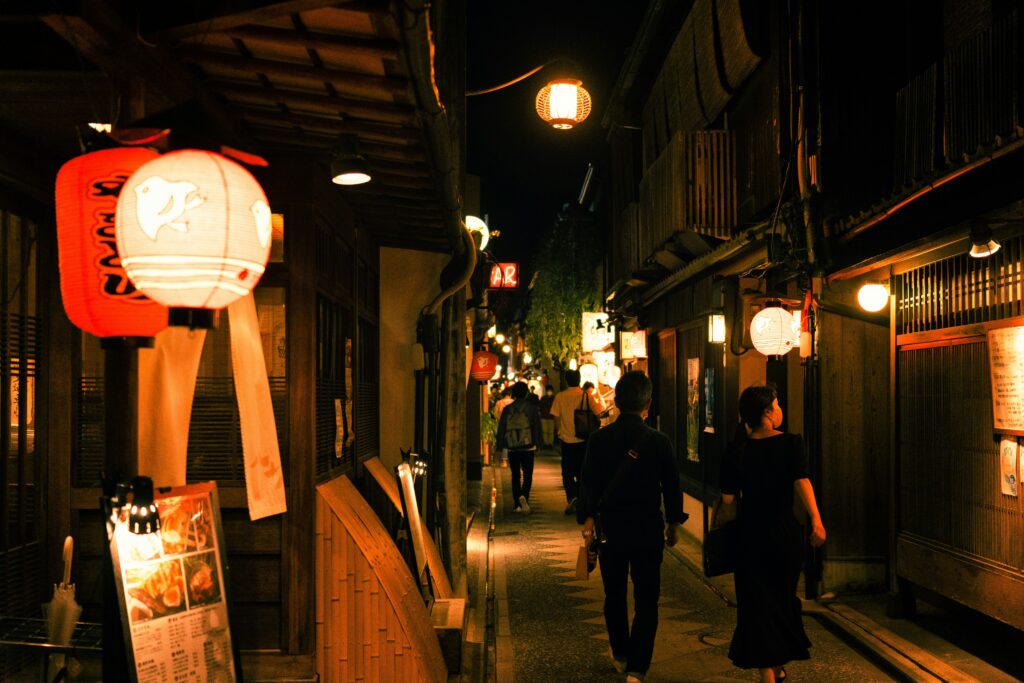

- Evening: Lively Nights in Pontocho & Kiyamachi
Along the Kamo River, Pontocho and Kiyamachi are charming alleys lined with numerous restaurants and bars. Enjoy a quintessential Kyoto evening at an izakaya (Japanese pub) or a bar, soaking in the city’s unique atmosphere.
Day 2: Ancient Charm, Silver Beauty, and Arashiyama’s Natural Splendor
On your second day, immerse yourself in the old-world charm of the Higashiyama area before venturing into the lush natural beauty of Arashiyama.
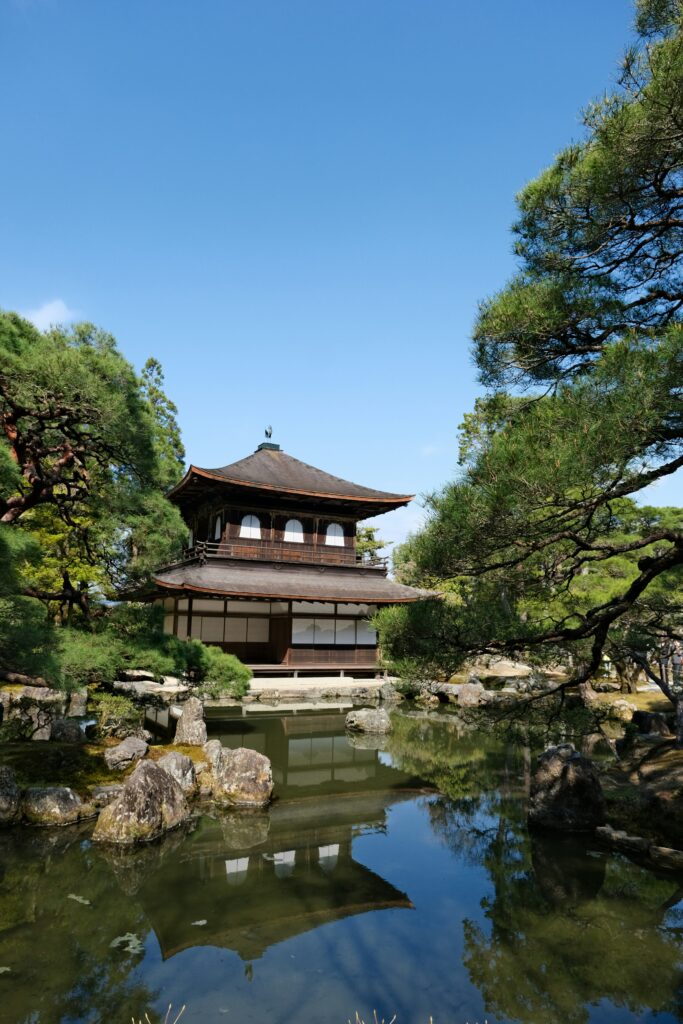

- Morning: Ginkaku-ji Temple & Philosopher’s Path
Visit Ginkaku-ji Temple (Jisho-ji), often seen as a counterpart to Kinkaku-ji. Though less flamboyant, its garden embodies the aesthetic of “Wabi-Sabi” and is a must-see. (Wabi-Sabi Explained: A Japanese aesthetic concept that finds beauty in simplicity, imperfection, and transience, often characterized by quiet elegance.) Afterward, stroll along the Philosopher’s Path, a charming walkway alongside a canal. It’s especially beautiful during cherry blossom season in spring and autumn foliage, perfect for a leisurely walk. - Lunch: Higashiyama Area for Kyoto Cuisine or Cafe
Around Ginkaku-ji and the Philosopher’s Path, you’ll find atmospheric cafes and restaurants offering traditional Kyoto cuisine.


- Afternoon: Arashiyama (Bamboo Grove & Togetsukyo Bridge)
Travel to Arashiyama by local bus or train. The ethereal Bamboo Grove is a captivating sight, with towering bamboo stalks creating a mystical ambiance that enchants visitors. The iconic Togetsukyo Bridge, spanning the Katsura River, is a symbol of Arashiyama. Enjoy the beautiful seasonal landscapes it offers. - Dinner: Arashiyama Area or free choice in Kyoto City
While there are dining options in Arashiyama, you might consider returning to Kyoto city to explore a different neighborhood for your evening meal.
Day 3: Mysterious Torii Gates and the Vibrant Kitchen of Kyoto
On your final day, experience the mystical world of Fushimi Inari Taisha and enjoy souvenir shopping in Kyoto’s lively market district.


- Morning: Fushimi Inari Taisha Head to Fushimi Inari Taisha, famous for its thousands of vermilion torii gates.
The seemingly endless tunnels of gates are awe-inspiring and make for fantastic photos. It’s the head shrine of the Inari faith and particularly popular with international visitors. - Lunch: Near Fushimi Inari or move to Central Kyoto

Along the approach to Fushimi Inari Taisha, you’ll find various food stalls and eateries offering quick meals like Inari Sushi or Udon noodles.
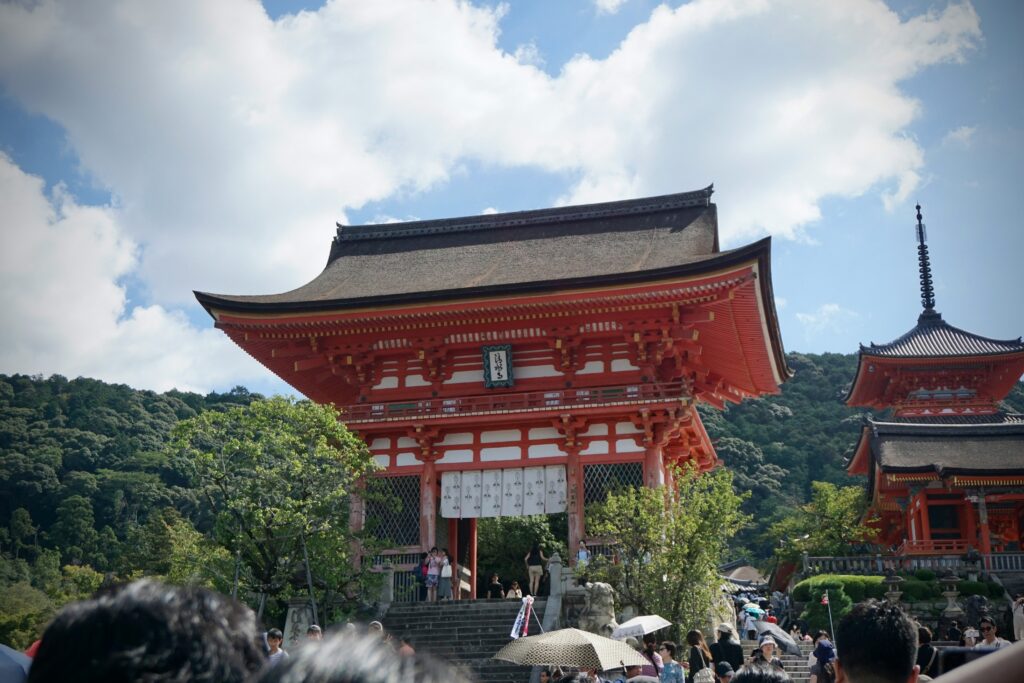
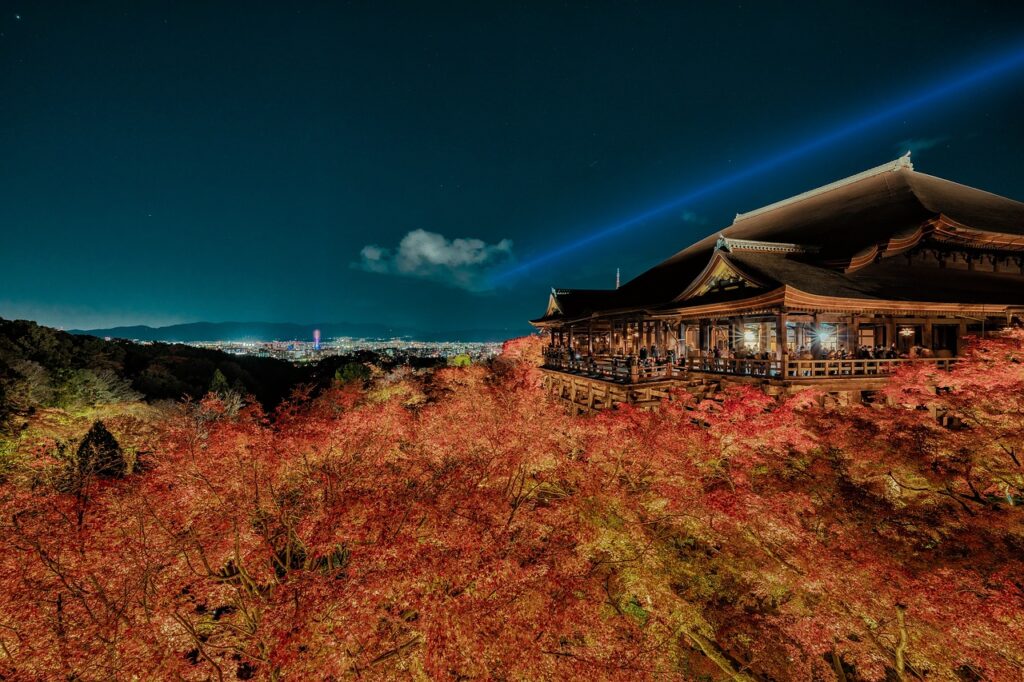


- Afternoon: Kiyomizu-dera Temple, Sannenzaka & Ninenzaka, Nishiki Market & Gion Exploration, Souvenir Shopping
First, visit Kiyomizu-dera Temple, a quintessential Kyoto landmark. The view from its iconic wooden stage is breathtaking. Afterward, wander through the charming Sannenzaka and Ninenzaka slopes, stopping at traditional souvenir shops and cafes. Next, explore Nishiki Market, known as “Kyoto’s Kitchen.” Browse various stalls selling Kyoto vegetables, pickles, sweets, and other local delicacies. You might even find some samples to taste! Then, take a stroll through Gion, Kyoto’s famous geisha district. If you’re lucky, you might catch a glimpse of a maiko (apprentice geisha) or geiko (geisha). For souvenirs, look for traditional crafts, wagashi (Japanese sweets), and matcha-related products in Gion, at Kyoto Station Building, or in department stores.
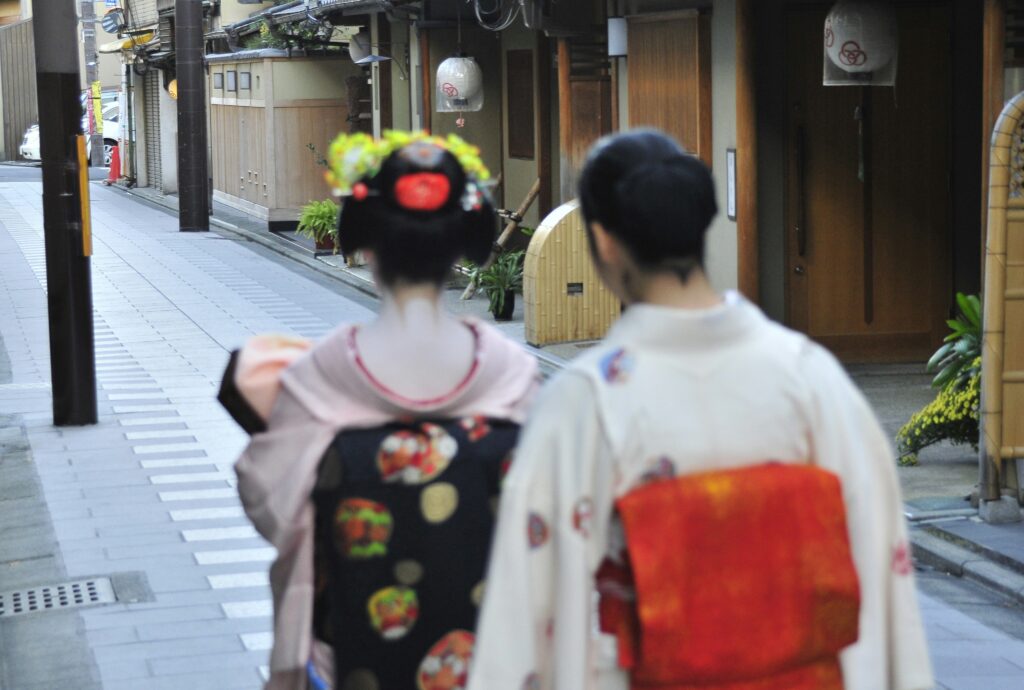

- Dinner: Wrap up your trip near Kyoto Station For your final dinner, dining near Kyoto Station is convenient, especially if you have a Shinkansen (bullet train) departure to consider.

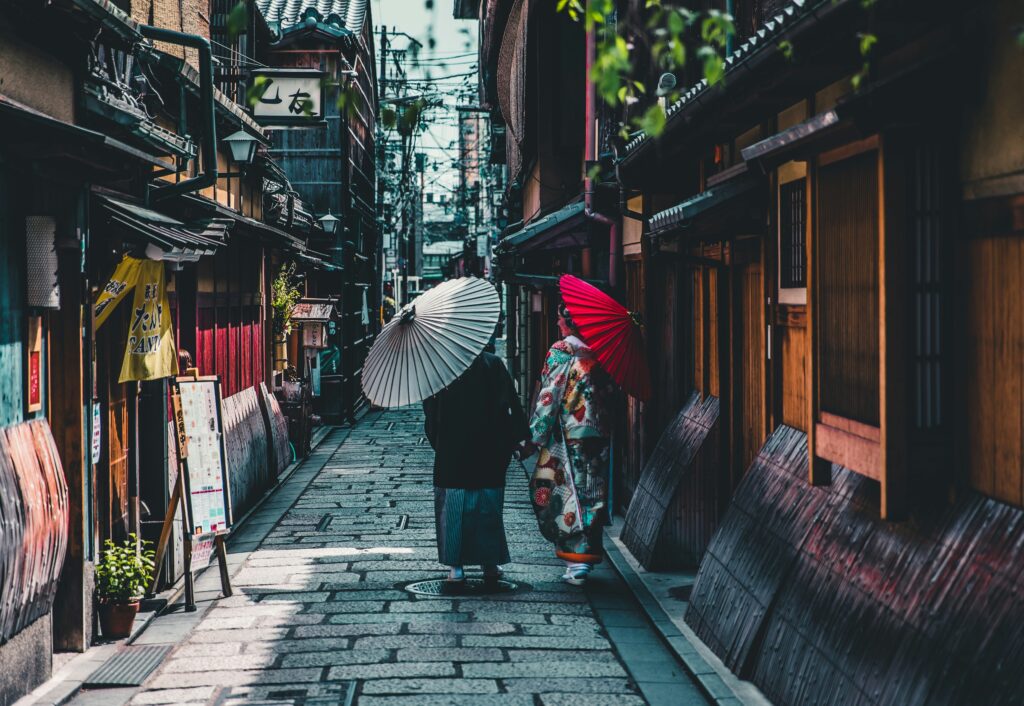
【Getting Around】 Getting around Kyoto is very convenient by city bus. We recommend considering a one-day bus pass. For areas like Kinkaku-ji, Ginkaku-ji, and Arashiyama, you’ll combine buses and trains.
【Accommodation】 Kyoto Station area offers excellent transport links and a wide selection of hotels. For a deeper immersion into Kyoto’s charm, consider staying at a traditional ryokan (Japanese inn) or guesthouse in areas like Higashiyama or Gion.
【Other Tips】
- Kyoto gets very crowded during peak seasons (cherry blossom in spring, autumn foliage). We recommend making reservations in advance and starting your day early.


- Many temples and shrines offer Goshuin (御朱印). Collecting them is a wonderful way to commemorate your visits. (Goshuin Explained: These are unique seals and calligraphy received at temples and shrines as proof of your visit. They feature the date and the temple/shrine’s name, making them a beautiful and personal souvenir of your Japanese journey.)
- Renting a kimono and strolling through Kyoto’s historic streets can also be a memorable experience!
We hope this itinerary helps you create wonderful memories on your first trip to Kyoto. Enjoy exploring the ancient capital to the fullest!

